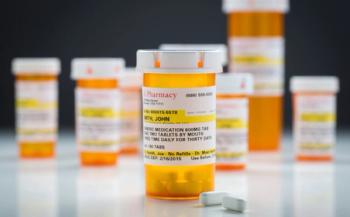
Packaging for Patient Engagement
Funso Olufade discusses how solutions such as the new Adherence Package can help increase pharma–patient engagement.
Funso Olufade discusses how solutions such as the new Adherence Package can help increase pharma–patient engagement.
Research articles on patient engagement indicate the pharma industry trend towards patient reported outcomes, clinical trial data for targeted therapies and multitudes of patient support programs. Interaction between pharma companies and patients are limited but the industry appears eager to do something about this. The limited interaction or engagement challenge exists due to medication distribution channels-other 3rd party stakeholders, such as healthcare professionals (doctors, pharmacists) and group purchasing organizations-who procure medicines on behalf of healthcare institutions. The pharma industry also interacts with or through drug distributors who supply the retail and hospital pharmacies. In all, there is limited, direct interaction with the patients due to significant regulatory hurdles. Patients want and need as much resources as possible to achieve better health and drug manufacturers can do more to support this.
Pharma’s first charge is drug research and development but if we can contribute to helping patients take the right medicine at the right time, we should. As Dr. C. Everett Kopp, US Surgeon General once said, “Drugs don’t work in patients who don’t take them”. Bridging the challenge of patient engagement with the hurdle of medication adherence seems like a logical void to fill. Approximately, 50% of patients do not take their medication as prescribed,1
The hurdles
Patient engagement value proposition for pharma companies internal stakeholders (senior management & cross functional teams) might be more challenging to external ones (patients, physicians, pharmacist and payers). Externally, it becomes obvious pharma’s quest for patient engagement. The perception - when the engagement “message” is delivered comprehensively - it is for a greater good - helping patients. However, some will wonder “what’s in it for them (pharma)” - WIIFM. There is competitive advantage to the company that offers patient engagement solutions first as a standard in their category of products or therapeutic area. Moreover, it can also be about enhancing corporate and industry image, there are just other intrinsic benefits that come with that over time. The forthcoming example is from Europe, a region of the world where DTC (direct–to-consumer) advertising is forbidden - patient engagement is perceived as an oxymoron.
Other regulatory hurdle might require medical justification or in some instances, ask to defend patient engagement solutions are not just gimmicks drawing an unnecessary attention to known issues. This external challenge pales in comparison to other internal challenges (manufacturing, supply, finance) who still think R&D is the only way pharma can help patients. Pharma companies’ internal stakeholders require a paradigm shift to appreciate the value of patient centricity. This is because the “patient first” mindset needs to established within the organization. There are more ways pharma can help patients beyond the pills. Other ROI metrics and KPIs might not be readily available at the onset but a path - from if to engage patients to how is set.
Complex problems can have simple solutions
Simple solutions at times are overlooked and “not done before” does not necessarily imply unattainable. In fact, the “Columbus Egg” experiment of 1493 comes to mind during Christopher Columbus’ dinner with Cardinal Mendoza upon discovery of the Americas. The challenge of standing an egg on its head was the discussion as Mendoza challenged Columbus that the voyage and discovery of the Americas was not a big deal. After numerous unsuccessful attempts by everyone present, Columbus tapped the egg, gently on the table breaking it slightly and, with this, the egg stood on its end. Everyone could have done it, but no one did.
With chronic diseases, taking medications daily for the rest of one’s life can become a mundane and routine activity. A calendarized blister with the seven weeks days is becoming standard for most pharmaceutical compliance packaging. Patients cultivate a habit of when to take their pills, reducing wastage and make a routine, somewhat more interactive to patients. Taking a second to think about if “I’m taking the Tuesday pill on a Tuesday” might not be enough but complementing the calendar days with other features appears to the logical version 2.0. Augmenting standard features of pharmaceutical drug packaging and incorporating new ideas created an
Below: Italy's version of the Adherence Package.
Furthermore, how often do patients read their product information leaflet (PIL) – the multi-page, neatly folded papers that come with your medication? The challenge, (1) the text prints on the leaflet are often small, (2) hard to read and discern important information and (3) the folding and placement of this piece of paper is truly an artwork. The fifth feature of the Adherence Package is the Digital Product Information via the QR-Code. The QR codes leads directly to a product website where summarized and segmented sections of the package leaflet are made available. This helps provide access to product information that patients can refer to for relevance, in an easy to read, legible format. The chemical structures of products are important but most patients care about how to store their medication, how they take it or possible side effects, all the information available in the “unfold-able” package leaflets.
The features of the adherence package, although only currently available for an antihypertensive medication, can be adopted and improved broadly. It provides simple solutions to engage and interact with patients in what they already do daily - opening their medication packages.
Wholesome solutions for patient engagements might not exist. Approaches like the adherence package are the little things to nudge patients in the right direction. The regulatory hurdles to get “patient-centric” innovations approved still exist. However, solutions like the Adherence Package can spur other ideas and increase pharma– patient engagement.
Sources
1. Brown, MT et al., Mayo Clin Proc. April 2011, 86(4):304-314.
2. National Council on Patient Information and Education. Accelerating Progress in Prescription Medicine Adherence: The Adherence Action Agenda. A National Action Plan to Address America’s “Other Drug Problem.” October 2013.
About the Author
Newsletter
Lead with insight with the Pharmaceutical Executive newsletter, featuring strategic analysis, leadership trends, and market intelligence for biopharma decision-makers.




